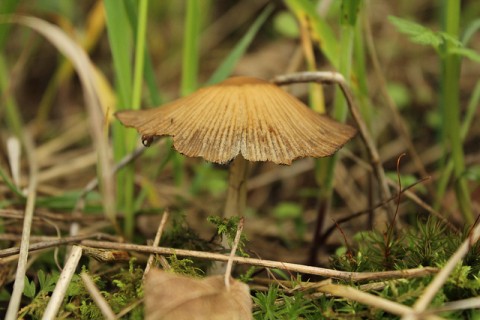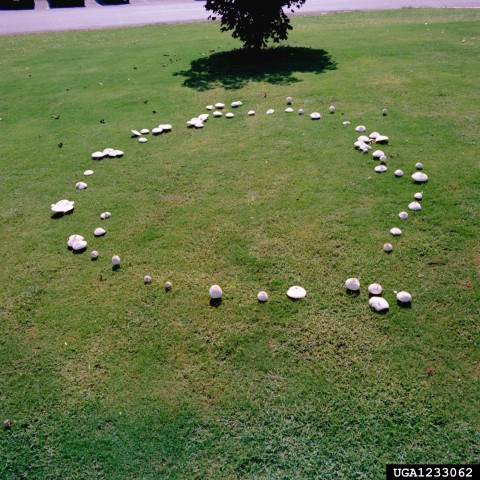
Many common mushrooms, such as ink cap, are beneficial. LadyDragonflyCC photo.
After all the rain we’ve had lately, you may see that mushrooms have sprouted in your lawn or garden beds. Should you be concerned?
In most cases, the mushrooms are completely harmless, and they provide concrete benefits to your yard and plants. If you have children or pets, it’s best to err on the side of caution and remove the mushrooms.
Beneficial mushrooms
According to Michael Kuo at MushroomExpert.com, there are two types of beneficial mushrooms:
- Saprobic mushrooms help decompose dead organic material. Their mycelia chew up fallen leaves, dead blades of grass, woody debris, dead rootlets, and so on, returning this material to the soil. Imagine what would happen if nothing decomposed in your yard or garden: stuff would eventually pile up sky high! Yes, you can remove dead organic matter yourself. But your rake merely carries leaves away, rather than breaking them up into natural, soil-enhancing particles.
- Mycorrhizal mushrooms are involved in symbiotic relationships with plants and trees. The plant’s rootlets are surrounded and protected by the mushroom’s mycelium, which helps the plant absorb water and nutrients; in exchange, the fungus gets sugars and amino acids. Most trees cannot survive without mycorrhizal partners from the fungal world.
Harmful mushrooms

Armillaria root rots. Linda Haugen, USDA Forest Service, Bugwood.org.
Not all mushrooms are benign. Some grow from harmful fungi.
Armillaria is a root rot that has honey colored mushrooms. This fungus is naturally occurring in the Northwest. Armillaria root disease is the most common and most widely distributed forest root disease in Oregon and Washington. In western Washington, it is primarily found in trees that have been stressed.
An infected tree will commonly show a gradual decline, with small, yellowish leaves, reduced growth and dieback of branches. Trees that are chronically infected may wilt suddenly during periods of stress, such as drought.
It is easy to identify armillaria by looking for white fungal mats under the bark, black shoestring-like structures (called rhizomorphs) found under the bark, around roots or in the soil and honey-colored mushrooms found at the base of the plant (see photo). Mushrooms of armillaria may develop annually in the fall during wet periods. They usually appear in groups, with up to several hundred on or near decaying wood, stumps, or roots.
Although spores from these mushrooms can infect recently wounded plants, they apparently do not play an important role in the spread of the disease. Note that many other fungi also produce mushrooms on or near decaying wood.
The best way to prevent armillaria root rot on ornamental trees and shrubs is to keep the plants healthy. Water thoroughly during drought periods and provide good drainage. Avoid injuring trees and avoid damaging or stressing the roots.

Fairy ring. Clemson University – USDA Cooperative Extension Slide Series, Bugwood.org
Fairy ring is common in lawns. The mushrooms are visible in spring and summer. Several different types of fungi may cause fairy rings.
The only control method is to remove the mushrooms when they appear to prevent the fungus from spreading. We recommend watering deeply and infrequently, along with moderate fertilizer application. Typically, fairy ring is not detrimental to lawn health.
To find out more
If you have a serious interest in mushrooms and fungus, a good field guide for the amateur mycologist is Mushrooms Demystified by David Arora. For local mushrooms, a good field guide is Mushrooms of the Pacific Northwest by Joe Ammirati and Steve Trudell. Or find a list and photos of edible mushrooms on the Northern Bushcraft website.
To learn more about armillaria, check out these and other sources:
- US Forest Service
- University of Minnesota Extension
- University of California IPM Program
- University of Illinois Crop Extension
